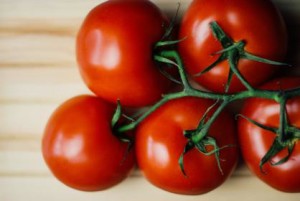Determining What Kind of Plants Are Right For Your Tastes and Your Climate
 If you have decided to dive in, get some dirt on your hands and grow beautiful, delicious vegetables at home, what’s the next step? After you’ve chosen a location for your garden with good drainage and adequate sun, it’s time to map out your plot. Deciding what kind of plants you include in your plans may begin with what you like, but there are a few other considerations you should include.
If you have decided to dive in, get some dirt on your hands and grow beautiful, delicious vegetables at home, what’s the next step? After you’ve chosen a location for your garden with good drainage and adequate sun, it’s time to map out your plot. Deciding what kind of plants you include in your plans may begin with what you like, but there are a few other considerations you should include.
The taste of a ripe, red tomato: This vision of tasting fresh, flavorful tomatoes at dinner is often what spurs people to try their first vegetable garden. It is important to include plants that you want to eat in your backyard plot. If you have small children that aren’t big vegetable fans, planting some items that they do tend to eat can help them transition to other vegetables that they’ve helped weed and harvest. A kid that puts up with green beans may suddenly love them when he has plucked them from the garden outside his bedroom window.
Getting the most return: If you’re limited on space, either because you live in an urban setting or because most of your yard might be shady, it’s good to think about what kind of plants will give you the best yield for the space. Corn, for instance, takes up a lot of space to get the necessary cross-pollination, while plants like tomatoes or strawberries can be planted in a container on a balcony or in a hanging bag.
Consider what you can’t get: Maybe you live close to a thriving farmer’s market where you have access to locally-grown products. It’s a good idea to think about what you don’t tend to see stocked there and plant vegetables that are harder to get in your area.
Determine what your goals are: Another consideration is whether you would like to put some fresh loose-leaf lettuce on the table this summer, or you are canning and freezing vegetables for the entire year. Maybe you’d like to plant some squash with hard flesh, like butternut or spaghetti, that can last for months in a cool, dry place. You can also stagger your planting of items like lettuce to enjoy them for many months, if you’re not quite ready to dive into canning and preserving.
Think about whether you’ll be around: If you take long vacations, green beans and loose-leaf lettuce may not be ideal, because you may miss their harvest time. You can ask a neighbor or friend to come over and enjoy your fresh vegetables, or you can think about planning your garden harvest around your travel.
All these decisions can play a role in what kinds of plants you choose, but ultimately, the answer lies in what will help you enjoy gardening.
When you’re planning your garden, be sure to include Kincaid Plant Markers to help you identify your plants and keep your garden organized. We have a full selection that resist rust and are made for a lifetime of gardening.
